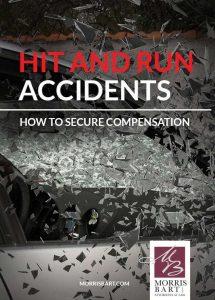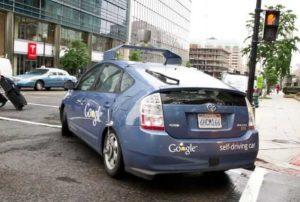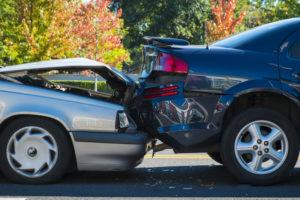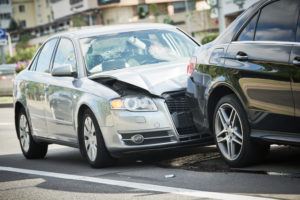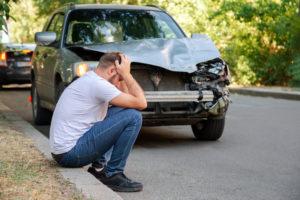
Who is at fault in a head-on collision is the driver who violated a traffic law and allowed the two vehicles to crash into each other. However, it usually takes an investigation to determine what happened, who acted carelessly or recklessly, and who is legally liable.
In many cases, multiple investigations will occur. This is especially true if the injuries sustained in the crash were moderate or severe. This could include local law enforcement, both drivers’ insurance carriers, and the law firms representing them.
An Investigation Will Determine Fault and Liability
The only way to fully understand what happened in a head-on collision is to investigate the circumstances of the crash. This requires investing time and resources to:
- Survey the scene
- Reconstruct the accident
- Work with experts
- Obtain documents
- Canvass for witnesses
- And more
The responding officers will likely investigate based on witness statements and what they see at the scene, making a preliminary determination of what happened. However, this is not always definitive. While they may issue citations based on violations of traffic laws, and this could be evidence to support fault, it is sometimes possible to show how the officers erred in their report.
When your insurance company or car accident attorney investigates your crash, they will gather evidence to support your claim. They will develop a case to show that the other driver caused the accident and minimize any role you may have played.
Common Evidence in a Head-On Collision Case
The evidence available in a head-on crash claim varies based on the circumstances of the accident and other factors. An accident at a busy intersection in the middle of the afternoon will likely have more witnesses than on a deserted interstate late at night, for example.
Some evidence that your personal injury law firm may use to support your insurance claim and financial recovery includes:
- Law enforcement’s accident report
- A survey of the accident scene
- Accident reconstruction data
- Eyewitness interviews
- Photos or videos of the accident
- Physical evidence from the scene
- Your relevant medical records
- Medical expert testimony
- Documentation of your damages
For a free legal consultation, call (800) 537-8185
How do Head-On Crashes Occur?
Because engineers design and build roads to help avoid accidents and traffic laws are in place to keep everyone safe, it is almost impossible to have a head-on collision if everyone does what they are supposed to do.
For a head-on crash to happen, one driver has to act carelessly or recklessly, violating a traffic law. This occurs when:
- One driver crosses the centerline on a two-lane road
- A driver passes illegally or without room to do so
- A motorist drives the wrong way down a one-way street
- Drivers collide in the turning lane
- They enter the interstate from an exit ramp
- A driver crosses over the median
- A driver is otherwise on the wrong side of the interstate or a divided highway
The circumstances of each of these crashes are different, which is why an investigation is necessary.
Why Is It Important to Determine Who Caused a Head-On Accident?
Determining fault in a head-on collision matters because most states hold the negligent driver financially responsible for physical, emotional, and financial harm that occurs due to an accident they caused. This means accident victims could file an insurance claim based on that driver’s auto liability policy or a civil lawsuit against them.
If you were hurt, you and your attorney will provide supporting evidence to back your claim to the other driver’s insurer and demand a fair payout. If the insurer does not agree, you can take the case to trial.
Documenting fault is also crucial to the at-fault driver because of comparative negligence laws. If the other motorist contributed to the crash, they may not be able to recover the total amount to cover their damages. This depends on state law. For example:
- In Alabama, anyone who contributes to causing a crash cannot recover compensation.
- In Arkansas, you must be less than 51 percent at fault to recover in proportion to your level of responsibility.
- In Louisiana and Mississippi, anyone involved can seek a financial recovery in proportion to their percentage of fault.
Click to contact our personal injury lawyers today
Do I Need to Hire an Attorney to Handle My Head-On Collision Claim?
While you can file a claim on your own, it may save you immense time, money, and stress to work with a personal injury firm that knows how to navigate the claims process in your state and prove these cases.
You only have a limited time to take action. Although exceptions exist, you may only have a year or less to sue the at-fault driver in your crash.
- Alabama: Up to two years per Ala. Code § 6-2-38
- Arkansas: Up to three years under Ark. Code Ann. § 16-56-105
- Louisiana: Up to one year per La. Civ. Code Art. 3492
- Mississippi: Up to three years under Miss. Code Ann. § 15-1-49
Speak to a Team Member from Morris Bart, LLC, for Free Today
You can speak with a team member from the Morris Bart law firm about your head-on collision today. Areas we serve include Louisiana, Mississippi, Alabama, and Arkansas. We have 15 locations across the Gulf South.
Dial (800) 537-8185 now for your free consultation with our team.
Questions?Call (800) 537-8185
to find a Morris Bart office near you.


